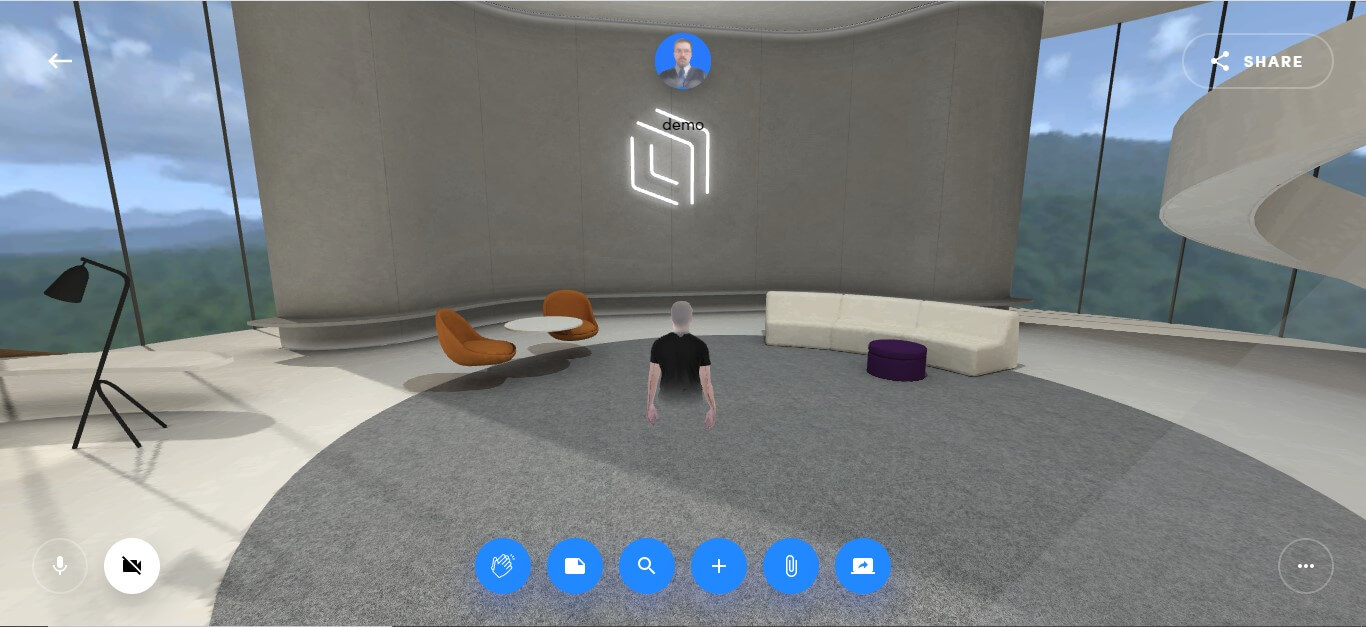Spatial was on our list of AR remote work platforms. There were internal discussions about also including the platform in our list of VR collaboration platforms. The solution can present avatars in a physical space, or avatars can share a virtual space. All things considered, it’s a pretty powerful platform but it’s known primarily for its unique approach to avatars.
Meet Spatial
Spatial was founded in 2016 driven by an impressive line-up of investors including Macintosh co-founder Andy Hertzfeld and Instagram co-founder Mike Krieger. The company’s own co-founders, Anand Agarawala and Jinha Lee, have their own impressive pasts including working at Google, MIT, Microsoft, and Samsung.

The platform works on just about any device, from HoloLens and Magic Leap to desktop and mobile, and even an Nreal beta. Much of this accessibility came from a recent platform update allowing Spatial to launch from a web browser.
“We opened up the platform a year ago and have since logged 10 million minutes in Spatial – with 50% of those being non-headset users,” CEO and Co-Founder Anand Agarawala said in a release shared with ARPost. “We wanted to really invest in that and bring the full potential of Spatial to everyone, on any platform they choose.”
Some functionalities are available for free. However, there are also price tiers for more advanced feature requirements and large-scale deployments.
Entering and Using Spatial
Spatial is probably best known for its unique approach to avatars. The user takes a selfie, which is then mapped to a 3D model for a literally photo-realistic avatar in moments. In fact, the platform is sometimes cited as having avatars that approach (or occupy) the uncanny valley. Avatars have a photorealistic head, as well as a torso and arms but no legs.
![]()
Within a room, desktop users navigate with the arrow keys or WASD keys, as well as the E and Q keys to rotate the camera. They can also interact with some in-world assets and with platform controls via mouse or touchpad. Headset users do these things with controllers and/or gestures depending on their setup.
Basic in-world controls and features include applause, placing and moving sticky notes, and screen sharing. Users can also select seven different environments and create their own custom environments.

When the room is set up, users can generate custom links that can be shared via email or text. If you want to explore someone else’s event or just get more value out of the platform when you don’t have a room yourself, you can check out events happening on the platform. These include talks, cultural events, and even NFT art galleries.
“We’re excited to be the first to empower NFT creatives to get their work noticed in ways that have never been done before,” co-founder and CPO Jinha Lee said in the release.
Where It Lands in the Market
Many of the practical features of Spatial are similar to those of other platforms. The avatar system isn’t its only strong point but it is worth highlighting.

Most of the other web-accessible remote collaboration platforms require users to either use a default avatar (Hubs) or spend time creating a more personal but non-realistic avatar (Frame). The only other platform that offers a similar interface is Arthur, which requires an app download and an Oculus headset for the consumer suite.
Get In and Look Around
Spatial’s unique avatar system has become a touchstone in XR but that’s no excuse to be distracted from the other elements of this powerful and user-friendly platform. Try it for free, use it forever.




